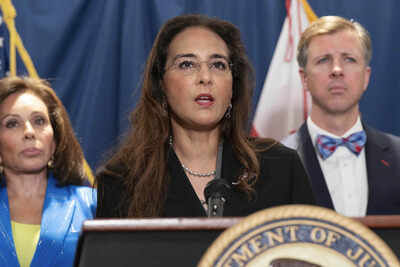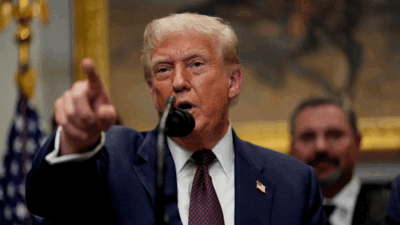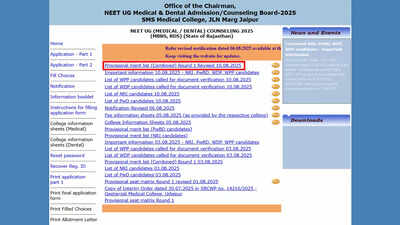“There are problems with American Medical education system,” says Harmeet Dhillon: What is the reality?

It is not every day that a comment about visas rips open a conversation about the way America trains its doctors. But that’s exactly what happened when Harmeet K. Dhillon, an India-born attorney and former Trump administration official, said in a X post that, “Our medical system is broken.” She was backing foreign-trained physicians and the H-1B pathway, but her words did more than wade into an immigration fight. But her words did more than wade into an immigration fight. They put the spotlight on a system that moulds who ends up in white coats, and who is left waiting in exam rooms across the country. The debate now isn’t whether Dhillon’s remark was provocative; it is whether it dug up the real picture or is just a political hyperbole.
What Dhillon actually said — and why it matters
Dhillon anchored her case in personal history: her father, she said, “was the only orthopedic surgeon for over 15 years in a rural North Carolina farming county,” an example, she argued, of how foreign-trained physicians fill geographic gaps. She warned against “scapegoating” immigrant doctors and laid blame instead on what she called ideological and admissions failures in US medical education. Dhillon’s case stems from a personal history. Her father, she said, “was the only orthopedic surgeon for over 15 years in a rural North Carolina farming county,” an example, she argued, of how foreign-trained physicians fill geographic gaps.Her comments ran alongside Republican Congressman Greg Murphy’s blunt endorsement of H-1B reliance for clinicians: “H1-B Visas are critical for helping alleviate the severe physician shortage this nation faces. We cannot train enough American Doctors fast enough.”Those two sentences — one moral and anecdotal, the other instrumental and blunt, frame opposing but related claims: (a) immigrant physicians are critical today; (b) the US training pipeline is failing to produce enough clinicians to meet demand. Both are empirically testable.
Loopholes in the American education system
US medical education remains globally respected for its research output and clinical training, but the pathway from student to practicing physician is riddled with structural loopholes. Chief among them is the federal cap on Medicare-funded residency slots unchanged since the Balanced Budget Act of 1997, which limits graduate medical education positions despite a steady rise in medical school enrollment, according to the Association of American Medical Colleges according to Association of American Medical Colleges (AAMC) report 2023. As a result, hundreds of qualified graduates each year fail to secure residency placements, leaving them unable to practice despite holding MD degrees. Tuition costs further worsen the problem: The median debt for medical school graduates in 2022 was $200,000 according to AAMC data released in 2022, a burden that pushes many toward higher-paying subspecialties rather than primary care. This trend deepens shortages in rural and underserved communities, where the Health Resources and Services Administration projects a shortfall of more than 17,000 primary care physicians by 2035 according to Health Resources and Services Administration (HRSA), 2023. With only 155 accredited MD-granting institutions in the country, the system’s bottlenecks mean the pace of producing new doctors is dictated less by student ability than by outdated policy and economic pressure.
Can education alone fix the health system of America?
As Dhillon’s remark circles around the fractures in the American education system, the question that comes to the forefront is, can it be the mend as well? Independent, peer-reviewed benchmarking leaves little room for spin. The Commonwealth Fund’s comparative analysis places the United States at the bottom of wealthy-country peers on overall health system performance, a finding driven by poor outcomes, uneven access, and equity shortfalls despite far higher spending per capita. In short, the system gives value for money. Harvard Health’s report speaks of the system’s failures, excessive cost, baffling complexity, and perverse incentives that favour procedures over prevention. It reads like why education alone cannot cater to the education health of America.Training good doctors matters, but so do payment systems, primary-care capacity, insurance design and social determinants of health.
The choke point nobody in academe likes to discuss: Residency slots
You can increase medical-school seats, but the bottleneck after graduation is residency training, the controlled, accredited apprenticeship that actually produces practicing physicians. Medicare’s historical funding rules created a residency “cap” based on the number of slots a hospital trained in 1996; hospitals that wish to expand must find other money or wait for policy changes. That structural limit has long been a rate-limiting step for domestic physician supply. The Association of American Medical Colleges (AAMC) report issued in April 2025, projects continuing physician shortfalls even under optimistic scenarios: Recent AAMC analysis forecasts shortages on the order of tens of thousands of doctors in the coming decade without sustained policy change. Incrementing medical-school capacity without commensurate residency expansion, or incentives to keep graduates in clinical care and primary care, will not close the gap quickly.
Foreign-trained physicians: The stop-gap with moral and practical complications
International medical graduates (IMGs) are not marginal or sidelined players. IMGs fill a disproportionate share of primary-care and rural posts; data show they represented roughly one quarter of the physician workforce and account for a substantial share of first-year residency matches. This is like a lightning fact that trimming off immigrant participation from the equation would produce immediate harm in undeserved communities.But relying on that stop gap raises two ethical questions: Is it fair to recruit physicians from countries that already have shortages, and does it let the US off the hook for fixing its own system? Both answers matter to education policymakers drafting a sustainable long-term strategy.
Where the evidence pushes policy , not slogans
If we accept the empirical frame, system underperformance, workforce shortfalls, and IMGs filling urgent gaps, then the policy menu begins to look familiar but practical:
- Expand funded residency positions at scale. Congressional steps to add Medicare-supported GME slots have precedent and direct impact; policy levers here accelerate clinicians into practice faster than doubling pre-clinical seats alone.
- Retool incentives toward primary care and rural service. Compensation, administrative relief, and loan forgiveness tied to service in shortage areas shift career choices back toward community medicine, where shortages bite hardest.
- Synchronize admissions, capacity, and workforce planning. Increasing first-year matriculants without matching residency and clinical placement capacity is incomplete reform; workforce modelling must be the linchpin.
- Protect clinical competence while modernizing curricula. Teaching about sex, gender, and social determinants improves care for marginalized patients when done alongside rigorous biomedical training — and should not be weaponised as proof that schools have abandoned science.





